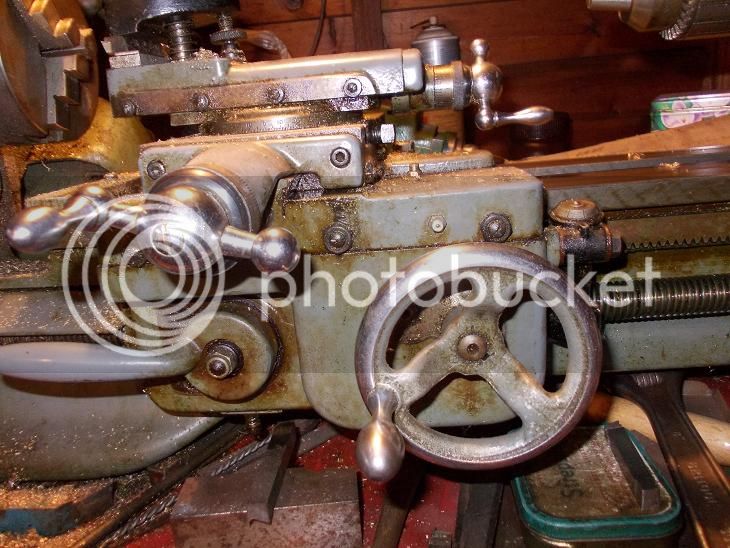A bit more progress towards my new indoor exercise regime...
I've tried (gently) to separate the broken handle from its post and gear wheel, without success. I removed a tapered pin but the two parts seem well united. I've not tried heat.
It will be a nice challenge to make a proper metal one, but to attempt that I need something that will make the lathe usable. So, admitting that it's the sort of temporary lash-up that might be used for a while, I have made a temporary handle from scrap aluminium and wood.
This is the sort of non-precision metalwork I feel comfortable with. I marked out a bar of thick ali and drilled a big hole in the middle for the existing ball to fit into. This needed to be opened out quite a bit. As luck would have it, one of the extra oddments with the lathe was a 7/8" drill bit, fitted with a cross-handle. (It's probably quite an old drill bit as it's marked with Morse's original 1863 patent!) I don't have anything to hold a bit that big, except the new lathe which I can't use yet, so there was no alternative except to do this bit by hand.
I was glad I'd chosen aluminium, not steel. It didn't take too long to get the hole to the right size. I don't recommend this technique, but it worked!
I then clamped the stub between more bits of aluminium and added a turned wooden handle, on a captive bolt. This left the handle unbalanced, so I added some lead washers to the light side.
Definitely not pretty but it will work.
So, here's the lathe set up, nearly ready for the off:
One bit seems to be missing - a special bolt to hold an idler gear in place; luckily I had a suitable one for now - but I hope I can try making a matching one soon.
The belt should arrive this week, when I will find out if it's all been a waste of time. Stay tuned for the next installment!




























